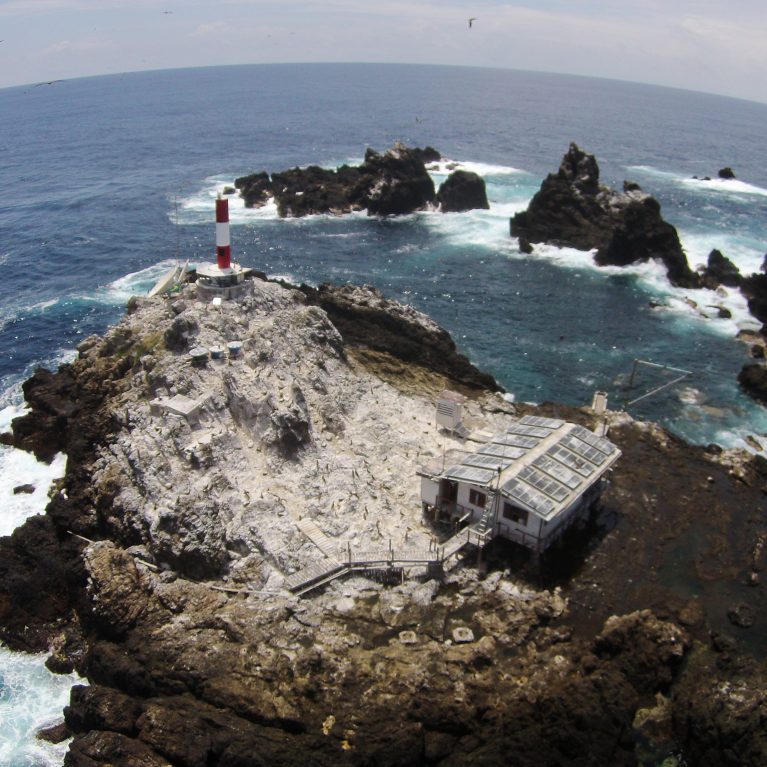Latin America’s devil rays
Devil rays, or mobula rays as they are also known, travel vast distances. Ramón is using satellite tags to get the inside scoop on their lifestyle, because by knowing when and where they travel, we will have a better chance of protecting them.
I am an internationally recognised elasmobranch researcher with more than 35 years of experience in the conservation, fisheries management, biology and ecology of this fantastic group of fish. My background includes an MSc from University of Bangor, UK, and a PhD from the University of British Columbia, Canada. I have worked at the National Fisheries Institute (Mexico), Far Seas Fisheries Research Institute of Japan, the FAO (Rome, Italy), PERSGA (Red Sea), the Wildlife Conservation Society, MARVIVA (Eastern Tropical Pacific) and two federal universities in Brazil. I am a founding member of...

Conservation and Ecological Research of Mobula rays in Brazil and Mexico
To improve the conservation and management of mobula rays around the world as well as to augment scientific knowledge about their ecology and population status.
Mobula rays, also known as devil rays, are the least studied group among the charismatic elasmobranch megafauna. However, threats to these species are on the rise. Lack of understanding of mobula species contributed to them not being listed on CITES Appendix II as three of the nine species are considered Data Deficient on the IUCN Red List of Threatened Species.
There are nine species of devil rays (genus Mobula). These majestic, planktivorous pelagic elasmobranchs reach sizes of one to five metres width and occur in tropical, subtropical and temperate seas worldwide. There is very little knowledge about their biology and ecology; meanwhile fisheries exploitation is increasing exponentially. Assessment of the current conservation status of mobula species is stalled by the paucity of basic information.
The complete distribution ranges and taxonomic status of mobula species are poorly known and need further study. Little is known about their habitat needs, population structure and migratory behaviour. They are highly mobile and found over wide geographic ranges, but since no published population genetics studies exist for any mobula species, it is unknown if there are individual populations in each ocean basin, or discrete populations with possible connectivity between them. There are initial studies of the spatial dynamics of only two species (M. mobular and M. japanica) with satellite tags, although not in the Atlantic Ocean.
Only two studies in the past 30 years provide original reproductive information for mobula species. The complete reproductive cycle of these species is poorly understood for most species; all seem to have one pup per pregnancy and take one to three years between births. Difficulties applying common elasmobranch-ageing techniques to mobulids mean that their age and growth is extremely understudied.
Six species are reported for Brazil (Mobula cf. hypostoma, M. japanica, M. tarapacana, M. rochebrunei and M. thurstoni), however, M. rochenbrunei might not be a valid species and the presence of M. hypostoma in Brazil is questionable. On the Atlantic coast of Mexico (Yucatan Peninsula) at least two species are reported, M. hypostoma and M. tarapacana. There are no published studies on the biology or ecology of these species in Brazil or Mexico.
The aims and objectives of this project are to:
- Contribute scientific knowledge about habitat utilisation, movements, migrations and interactions with fisheries of five mobula species in the Western Atlantic Ocean.
- Generate information about the population structure in the Western Atlantic by performing population genetics studies.
- Convince the Ministry of Environment of Brazil to support or propose the listing of mobula species in CITES Appendix II.
- Convince the National Commission of Biodiversity of Mexico to support or even propose the listing of mobula species in Appendix II.
